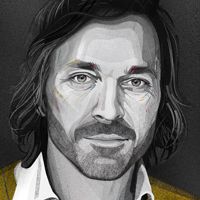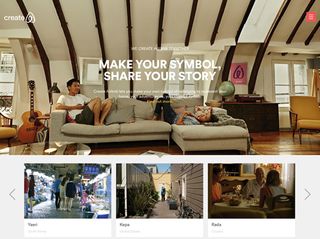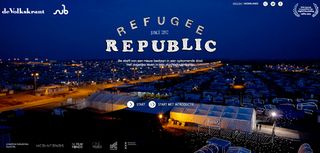How to drive social change with design
Richard van der Laken argues that it's time to seize the initiative and change society. Here's how.

Richard van der Laken is co-founder of graphic design studio De Designpolitie, and initiator and director of What Design Can Do, an event on the impact of design that takes place in Amsterdam. He explains why it's the age of the designer…
Quite often I find myself talking to people about what design exactly is, especially since launching the What Design Can Do platform four years ago. Since when has ‘food' been considered a subject for design, they wonder? And what exactly is ‘social' design? Isn't all design social? Is architecture also design?
Well, everything is design, apart from nature, although creationists might disagree with me on that point. Everything touched by man is designed. Wake up in the morning, check the time on the alarm clock, sit on a chair at a wooden table, eat some cereal out of a blue or white bowl, cycle to work, send messages via WhatsApp: all of that has been designed.
In 1995, I graduated as a designer from an art academy that focused on the individual expression of students. What mattered was your attitude to society, your relation to the content, the form, the nature of the assignment, and the technique you wanted to apply.
That technique was, without exception, ‘offline'. A computer was some object in some far-off classroom, and almost nobody knew how it worked.
The world is no longer the same now. It's radically different in fact, and for more reasons than just the dominance of the computer as the new design tool. For example, there is, or was, the matter of the bank crisis.
Designing lives
But despite, or perhaps because of those changes, I am convinced that the quality of design plays a bigger role in our lives than ever before. Designers are not only good at designing functionalities but also good at solving problems, and especially in recognising problems that people didn't previously consider to be problems at all.
Look at the huge success of Airbnb and you see a design solution, an interface, in which a designer recognised how the huge demand among tourists for cheap rooms matched the desire among city dwellers to earn some extra money.

This opportunity would never have been seized upon by the traditional hotel sector, since their old earnings model is inadequate. Here, an outsider turned out to be the ‘game changer'.
The same goes for the smartphone, some two billion of which are in existence. So, was there a design problem unique to the devices? Not according to Apple and Samsung, who like nothing more than slugging it out with each other for design bragging rights.
But Dutch interaction designer Bas van Abel saw how minerals essential to the production of mobile phones were mined in a highly inhuman and environmentally damaging way in the Congo. He didn't go to Apple, or to the United Nations.
Instead, he designed the FairPhone. It's an eco-friendly smartphone that takes human wellbeing into account, some 30,000 of which were sold directly to consumers even before a single one had been produced. Everybody immediately understood that it was a good idea.
The crisis has turned out to be a wake-up call for designers. Things will never be the way they were. And that irrevocably throws up a few existential questions, also for designers. Why am I doing what I'm doing? What's my contribution? How can I change things for the better?
The design profession is not only about beauty or aesthetics, but also about offering alternatives, opening new perspectives, contributing solutions to pressing social issues and breaking taboos. It's not about talking, but about doing.
Talk less, do more
Surprising things happen when everything gets a thorough shake-up. The bank crisis means that there is little money invested in housing construction, and so you start to see the emergence of wonderful bottom-up strategies.
In Amsterdam, for example, city districts are being developed without major property developers, as architects and resident groups join forces to develop entire neighbourhoods. At last, those residents help to determine the design of their own homes and secure their own funding.
Can designers solve major humanitarian problems such as the issue of refugees? No, although designers can play an immensely valuable role along the entire chain, from refugee camp to asylum seeker.
For example, the Dutch artist Jan Rothuizen travelled to a refugee camp in Iraq and mapped life there and the resulting interactive project is sure to give you goose bumps.

US-based social design office Hyperakt developed The Refugee Project, a narrative and temporal map of refugee migrations since 1975. It used UN data to visualise refugee volumes over time and added historical content to help explain the events that caused some of the largest refugee movements of the last four decades.
These are instances where designers take the initiative to give a face to vulnerable groups such as refugees, to chart their often inhuman suffering.
In conclusion, everything is design. Perhaps we can rightly call this the Age of the Designer, the age when designers seize the initiative, shape their sector, and join with governments, businesses, consumers, users and the public at large to change society. My colleagues and I are ready to take up the challenge.
Words: Richard van der Laken
How else can design effect social change? Let us know in the Comments below...
This article first appeared inside issue 239 of Computer Arts, the world's best-selling design magazine. Save up to 59% with a subscription here.
Liked these? Read these...
- 5 essential rules of self promotion
- Adobe launches radical new stock image service
- Download the best free fonts

Thank you for reading 5 articles this month* Join now for unlimited access
Enjoy your first month for just £1 / $1 / €1
*Read 5 free articles per month without a subscription

Join now for unlimited access
Try first month for just £1 / $1 / €1
Get the Creative Bloq Newsletter
Daily design news, reviews, how-tos and more, as picked by the editors.
The Creative Bloq team is made up of a group of design fans, and has changed and evolved since Creative Bloq began back in 2012. The current website team consists of eight full-time members of staff: Editor Georgia Coggan, Deputy Editor Rosie Hilder, Ecommerce Editor Beren Neale, Senior News Editor Daniel Piper, Editor, Digital Art and 3D Ian Dean, Tech Reviews Editor Erlingur Einarsson and Ecommerce Writer Beth Nicholls and Staff Writer Natalie Fear, as well as a roster of freelancers from around the world. The 3D World and ImagineFX magazine teams also pitch in, ensuring that content from 3D World and ImagineFX is represented on Creative Bloq.
